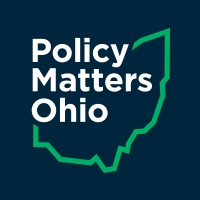
Maximizing Value: A policy blueprint
December 08, 2011
Maximizing Value: A policy blueprint
December 08, 2011
By Amanda Woodrum, Hannah Halbert and Jamie Wilson
Our economy, our communities, our workforce, and our environment are at a crossroads. Low-road development practices—based on low taxes, big incentives, and little oversight—have not produced the promised job growth. Instead, these policies have left our workers behind, our communities impoverished, and our environment polluted. Ohio communities need a better approach, one that fosters economic growth while also protecting the environment and supporting local businesses and workers. This is why the city of Oberlin, in partnership with Oberlin College and the city’s municipal utility have launched “The Oberlin Project” to make Oberlin the greenest little city in the U.S., grow the local economy in the process, and become a national model for sustainable economic development. This report is a policy blueprint to help Oberlin, and all Ohio communities, drive demand for clean energy while leveraging green investments to secure maximum value to the community. The four key components of this comprehensive strategy are designed to balance the three E’s of sustainable economic development—environment, economy, and equity.
Download summary (2 pages) Full report (20 pages)Executive summary
Drive demand for clean energy and create good jobs - Thinking of clean energy policies as potential drivers of economic development and job creation, can help communities realize the full potential of these investments and create a pipeline of local workers equipped with the right skills for the job. By adopting energy strategies we can also boost energy productivity (get more bang for our energy buck), save energy and money, promote greater energy independence, keep more of our dollars local, invest in our communities’ infrastructure, reduce emissions, improve our health and create good jobs. The first step in developing a sustainability strategy is conducting a community energy assessment. By identifying how energy is used and where emissions come from, the community can better understand what needs to change. After reviewing Oberlin’s energy use and emissions, several policy options and best practices were identified for five energy-using and emission-producing sectors: (1) upgrading the electricity system, (2) greening the commercial and industrial sector to reduce energy costs for firms, (3) enabling anchor institutions in the community to reduce energy use and cost, (4) making the transportation system more sustainable while promoting smart growth and complete street principles, and (5) promote energy savings for Oberlin residents in their homes. Communities can spur local investments in the green economy by adopting policy options and best practices. Doing so will increase demand for certain existing occupations and require enhanced skills in others. Emerging industries will need new workers with new skills. See page 2 of full report.
Maximize community value from green projects - Investment in the emerging clean energy economy has the potential to revitalize our state through increased job growth. However, a green job does not automatically mean a ticket into the middle class for workers. In the past, public resources have often been used to support economic development initiatives that rely on out-of-state labor, pay low wages, provide minimal benefits, and involve low-quality work. Without pro-active policy, new green investments may perpetuate old exclusionary patterns. Communities should carefully consider how they approach economic development, including green development, and leverage their investments wisely by engaging community stakeholders, adopting community benefit policies, employing best value contracting principles, and supporting community benefit agreements on green projects. See page 7.
Support local business entrance to green markets - Communities can maximize investments in green energy demand by targeting local businesses for new opportunities. Key policies that can help engage and support local businesses include: forming sustainable business networks, creating a pool of prequalified responsible contractors, forming local green pathways advisory councils, supporting green credentials and seals, and identifying training needs. Targeted outreach efforts to engage local employers as well as efforts to support their entrance into emerging green markets can help maintain continued enthusiasm and support for greening the community while ensuring green resources are targeted to support the local economy. See page 11.
Ensure residents have access to jobs created - Investing in the green economy is a sustainable development approach only if communities are also making policy decisions and implementing best practices that ensure local residents have access to the jobs. A well-trained workforce is key to attracting and retaining employers. Many options can help local workers skill-up and access green jobs, including: enacting targeted hire provisions, supporting on-the-job training for local workers, increasing use of apprenticeship and pre-apprentice programs, creating “bridge” programs, and accessing existing resources to support workers while completing training. See page 14.
Ohio was once known as a state that produced good jobs and strong communities. But decades of economic development built on tax cuts and incentives, along with declining wages, have undermined the stability of our communities. At the same time, we are spending more than one of every 10 dollars we make for fossil fuels purchased largely outside Ohio, putting additional pressure on our already strained budgets and degrading our environment. Fortunately, we can reverse course by taking a holistic approach to community development, which includes investments in the clean energy economy, support and training for local workers and businesses, and a commitment to engaging community stakeholders. Sustainable development can only happen when the economy works for everyone.
Tags
2011Amanda WoodrumClean Energy & Green JobsEconomic DevelopmentHannah HalbertPhoto Gallery
1 of 22